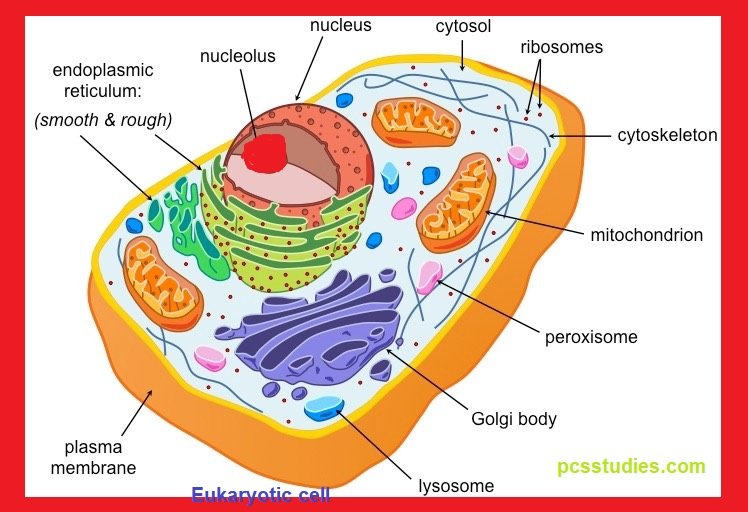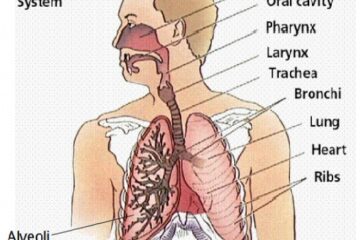Structure and function of cell
Structure and function of cell
The cells are as the fundamental unit of life, forming the basic structural framework of organisms. They are also termed functional units because each cell carries out specific processes essential for the organism survival and overall functioning.
Discovery of cell:
Aristotle (384-322 BC) put forward the concept of the cell.
- In 1665, Robert Hooke (1635-1703), An English natural philosopher and polymath, observed a piece of cork under the microscope and saw small compartments, and named it ‘cell’.
- After that In 1672, Antonie van Leeuwenhoek (1632-1723), a Dutch cloth merchant also known as the ‘Father of microbiology’ designed and improved the microscope. He was the first one to observe bacteria, spermatozoa, and red blood corpuscles, as cells. He named single-celled organisms like protozoa, and bacteria as animalcules.
- Robert Brown (Scottish botanist, 1773-1858) found a centrally positioned body and called it the ‘nucleus’ these are found in all cells.
The cell theory
M.J. Schleiden (Germann botanist), and Theodore Schwann (British Zoologist) independently proposed the cell theory. This was the biggest breakthrough in cell biology.
the cell theory was based on three observations as-
- all organisms are composed of cells.
- the cell is the structural and functional unit of life.
- cells arise from pre-existing cells.
In 1839 a Czech animal physiologist, J.E. Purkinje (1787-1869), studied the fluid contents of the cell. He named it protoplasm and also established its importance in cells.
In 1858, German biologist Rudolf Virchow (1821-1902) expanded the cell theory in his famous amorphism ‘Omnis Cellula e Cellula’, which means all cells originate from pre-existing cells.
In 1933, Max knoll (1897-1969) and Earnst Ruska (1906-1988) of Germany designed an electron microscope.
Structure of Cell:
The cell is the smallest, basic, structural, and functional unit of life. The organisms are made of diverse kinds of cells.
Every cell consists of a cytoplasm enclosed within a membrane and contains many biomolecules such as protein, DNA, and RNA, as well as many small molecules of nutrients and metabolites.
- They may be microscopic and also can be seen by nude eyes, for example, we cannot see bacteria from nude eyes but we can see a hen’s egg.
- It is interesting to know that the Human body has trillions of cells that vary in shape and size.
- Different groups of cells perform a variety of functions. They are two types on the basis of numbers as- multicellular and unicellular.
Diversity of Cells:
Diversity based on the size of the cell: the cell varies as it has categories of function.
- The smallest cell is 0.1 to 0.5 micrometers of bacteria. The smallest cell is Mycoplasma.
- The largest cell is 170 mm ×130 mm, the egg of an ostrich.
- The largest plant cell is the ovule of Cycas.
The diversity of cells on the basis of the shape– the shape of the cell varies as it may be spherical, round, or elongated in shape.
- Some cells like amoeba, and WBCs, have irregular or variable shapes.
- Bacteria may be rod, spiral, or comma-shaped.
- RBCs are doughnut-shaped or biconcave discs shaped.
- Nerve cells are elongated and branched.
Diversity of cells based on number:
Unicellular– An organism is made of a single cell. Single-celled organisms are called unicellular (uni: one; cellular: cell) organisms. Eg. amoeba, paramecium, etc.
Multicellular-Organisms made of more than one cell are called multicellular (multi: many; cellular: cell) organisms. Eg. plants, animals, etc.
Components of cell
The cell membrane, cytoplasm, and nucleus are the basic components of a cell. The cytoplasm and nucleus are enclosed within the cell membrane also known as the plasma membrane.
- This membrane act as a porous membrane that allows the passing of the material from both the outer and inner side.
- In the center of the cell, a dense round body is found called the nucleus. The nucleus is separated from the cytoplasm by the nuclear membrane.
- The cytoplasm is a jelly-like substance between the nucleus and the cell membrane. The cytoplasm contains small particles called organelles.
( Click here: read cell organelles)
In addition to the cell membrane, an outer thick layer is found in cells of plants known as the cell walls. The cell wall helps in the protection of plants.
The cells having nuclear material without a nuclear membrane are called prokaryotic cells. prokaryotes (pro: primitive; karyon: nucleus). Examples are bacteria and blue-green algae.

Structure of prokaryotic cell
Cells having a well-organized nucleus with a nuclear membrane are termed eukaryotic cells. (EU: true; karyon: nucleus). These cells possess a clearly defined nucleus enclosed within a nuclear membrane.
Ex. all organisms except bacteria and blue-green algae

Structure of eukaryotic cell
Eukaryotic and Prokaryotic cells
Eukaryotic cell:
1. Nucleus is distinct, with a well-formed nuclear membrane.
2. Double-membraned cell organelles(chloroplasts, mitochondria, nucleus)and single-membraned (Golgi apparatus, lysosomes, vacuole, endoplasm reticulum)are present.
3. Ribosomes – 80 S is found
4. Distinct compartments in the cell are found i.e. the cytoplasm and the nucleus.
5. Each chromosome has one linear double-stranded DNA complex with histones
6. Each chromosome has one centromere that divides a chromosome into two arms. However, if the centromere is terminal, the chromosome would have only one arm
Prokaryotic cell:
1. Nucleus not distinct
2. Single-membraned cell bodies like mesosomes are present. The endoplasmic reticulum, plastids, mitochondria microbodies like lysosomes, and Golgi body is absent
3. Ribosomes – 70 S is found. The chromosome is circular and remains attached to the cell membrane at one point
4. The chromosome possesses a single double-stranded circular DNA molecule and is not associated with histones.
5. The chromosome without a centromere.
Plant cells and Animal cells
Plant Cell:
Plant cells show the following features:
- The cell wall presents the outer side of the cell membrane which is made up of cellulose in plant cells.
- In plants, cell Vacuoles are found generally large.
- Plastids are present in a plant cell.
- Golgi bodies are present in the form of units termed dictyosomes in plants.
- The centriole is absent.

Animal cell
Animal cells show the following features:
- The cell wall is not found, the outermost structure is the cell membrane or plasma membrane.
- Generally, vacuoles are absent in animal cells, and if present, they are very small.
- Plastids are absent in animal cells.
- The Golgi body is well-developed having two cisternae
- The centriole is present in animal cell

You can also read:
Thank you 🙂



19 Comments
Biological classification – All Competitive Classes · October 29, 2020 at 8:06 pm
[…] go through the blog Structure and function of cell https://pcsstudies.com/index.php/2020/08/18/structure-and-function-of-cell-1/
Structure and function of cell-2 – All Competitive Classes · January 7, 2021 at 8:35 am
[…] the first part, we studied the introduction of cells in […]
Plant Kingdom-The Algae - Biology - PCSSTUDIES % · March 16, 2021 at 6:51 pm
[…] can define Plants as Multicellular, Eukaryotic, Photosynthetic Autotrophs rarely found heterotrophs having cellulosic cell walls. All […]
Biological classification - PCSSTUDIES - Biology PCSSTUDIES · May 12, 2021 at 5:56 pm
[…] Plantae includes all eukaryotic organisms containing chlorophyll commonly called plants. Some of them are partially heterotrophic […]
Cell Organelles - PCSSTUDIES - Biology - PCSSTUDIES · May 13, 2021 at 4:14 pm
[…] Structure and function of cell […]
Classification of Animal Tissues - PCSSTUDIES - Biology - · June 26, 2021 at 4:53 pm
[…] Structure and function of cell […]
Epithelial tissue - PCSSTUDIES - Biology - Epithelial tissue · June 26, 2021 at 5:35 pm
[…] Structure and function of cell […]
Cell Division- meiosis Biology % - PCSSTUDIES % · June 28, 2021 at 9:56 pm
[…] Structure and function of cell […]
Connective tissues - PCSSTUDIES - Biology Connective tissues · June 29, 2021 at 9:11 am
[…] Structure and function of cell […]
Cell Division-mitosis - PCSSTUDIES - Biology - Cell Division-mitosis · June 29, 2021 at 3:10 pm
[…] Structure and function of cell […]
Circulatory system - Transportation - PCSSTUDIES - Biology - · July 13, 2021 at 1:37 pm
[…] Structure and function of cell […]
Endocrine Gland And Hormones - Biology PCSSTUDIES % · November 26, 2021 at 11:05 am
[…] Structure and function of cell […]
Neoteny in Amphibians - PCSSTUDIES - Biology · December 26, 2021 at 12:44 am
[…] Structure and function of cell […]
Lipids- Definition, Function, and Categories - PCSSTUDIES - Science · February 8, 2022 at 9:48 pm
[…] of biological membranes: Glycophospholipids are the main structural component of biological membranes, other lipids like […]
Characters of Archaeopteryx - PCSSTUDIES Biology · March 30, 2022 at 8:53 am
[…] Structure and function of cell […]
Pigeon (Columba livia) - General Characters - PCSSTUDIES - Biology · May 7, 2022 at 2:16 pm
[…] Structure and function of cell […]
Common Human Diseases - PCSSTUDIES - Biology · June 8, 2022 at 8:03 am
[…] Structure and function of cell […]
BIOGEOCHEMICAL CYCLES - PCSSTUDIES % Environment · October 26, 2022 at 8:54 pm
[…] Structure and function of cell […]
Human Diseases - PCSSTUDIES - Biology · January 2, 2023 at 4:00 pm
[…] Structure and function of cell […]